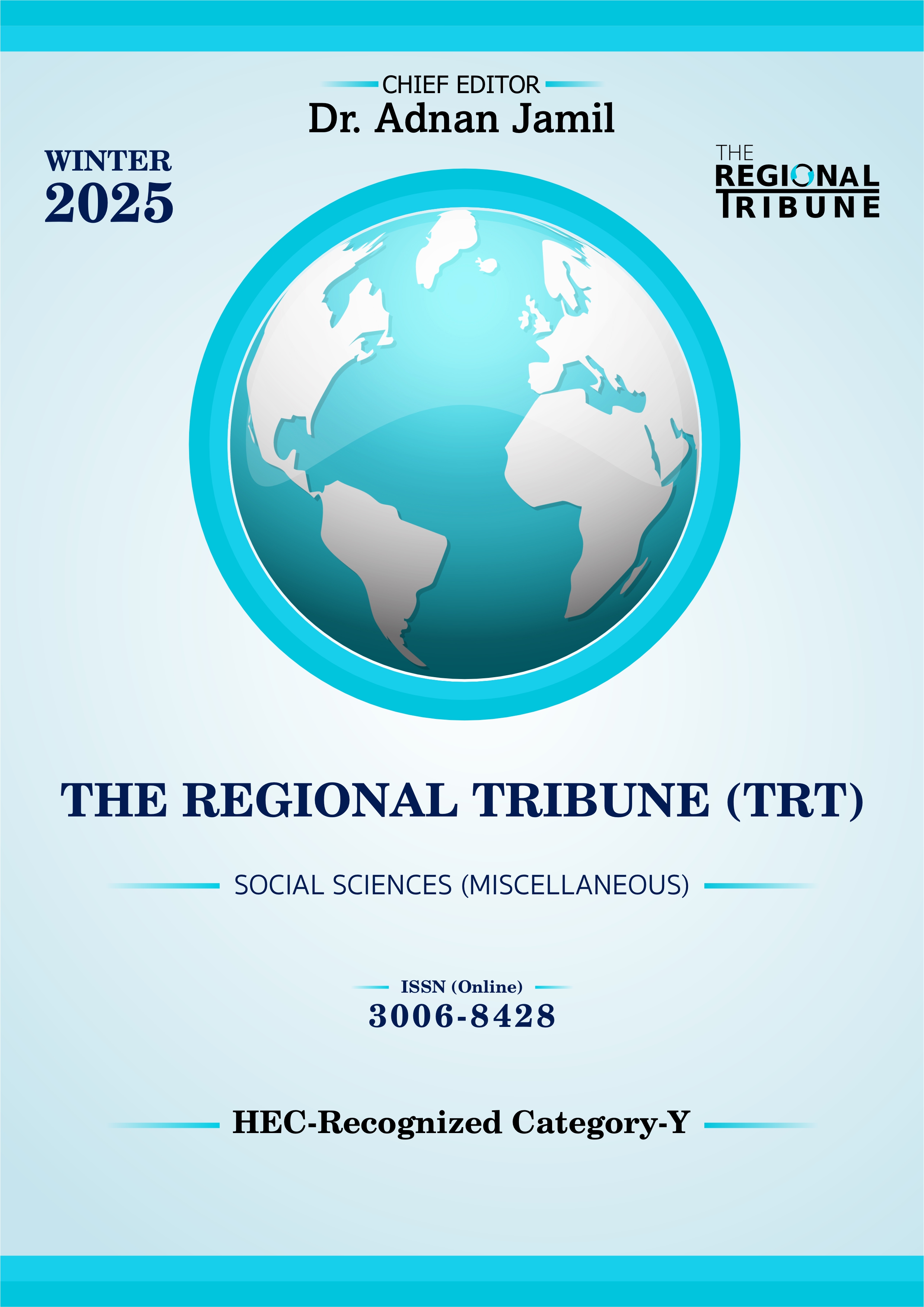A Critical Analysis of UK Legal Frameworks of Intellectual Property Laws and Artificial Intelligence (AI)
DOI:
https://doi.org/10.63062/trt/WR25.088Keywords:
Artificial Intelligence (AI), Intellectual Property Laws, Legal Liabilities and Infringements, UK Legal Framework, World Intellectual Property Organization (WIPO)Abstract
The artificial intelligence (AI) sector is expanding quickly internationally. According to the United States International Trade Administration Market Intelligence (2022), the UK's AI industry is expected to be worth approximately €17 billion, placing it third globally after China and the United States. This will necessitate the creation of a body of law for the regulation and shielding of AI-generated work. The intellectual property sector is struggling and is calling for a strong enough legal framework to accommodate the work that AI does. For example, the World Intellectual Property Organization (WIPO) has opened general comments about the relationship between AI and IP, recognizing the technology allows interested parties to participate in the conversation and allow for normal socioeconomic potential (WIPO Conversation on intellectual property IP and Artificial Intelligence (2020). Leveraging AI's advantages while guarding against and getting rid of its risks is the problem the UK faces. The United Kingdom boasts the highest concentration of artificial intelligence start-ups in the European healthcare and medical technology sectors. However, the UK's AI development and deployment capabilities pale in opposed to those of the United States and China, which are the world's leading nations in this domain. This article critically examines that how the AI creates impacts on IP laws in UK and proposes recommendations for better solutions.
References
Baker, A. (2022, October 24). Examination of AI inventions at the UKIPO: certainty at last? Lexology; D Young & Co LLP. https://www.lexology.com/library/detail.aspx?g=b9a53563-ff34-4e6f-bd9b-db907c697d46
Binns, J. (2022, 12 20). The impact of AI on copyright law. Legal Cheek. https://www.legalcheek.com/lc-journal-posts/the-impact-of-ai-on-copyright-law/
Christopher, S. (2022, Jun 04). AI at the UKIPO: Results from UKIPO consultation. Reddie and Grosse: https://www.reddie.co.uk/2022/07/04/ai-at-the-ukipo-results-from-ukipo-consultation
Cuntz, A., Fink, C., & Stamm, H. (2024). Artificial intelligence and intellectual property: An economic perspective. SSRN Electronic Journal. https://doi.org/10.2139/ssrn.4757971
Dennis, G. (2024, Jan 19). UK government AI report confirms decision on protection of copyright works. Pinset Masons: https://www.pinsentmasons.com/out-law/news/ai-report-confirms-decision-on-protection-of-copyright-works
Denoncourt, J. (2021). Patent-rich firms and corporate restructuring: patent signalling, valuation, and governance. In Research Handbook on Corporate Restructuring (pp. 346-376). Edward Elgar Publishing.
Feikhert-Ahalt, C. (2022). United Kingdom: Intellectual Property Office Rules Artificial Intelligence Cannot Patent Inventions. Libarary of congress: https://www.loc.gov/item/global-legal-monitor/2022-09-05/united-kingdom-intellectual-property-office-rules-artificial-intelligence-cannot-patent-inventions/
Government of UK. (1988). Copyright, Designs and Patents Act 1988. Legislation.gov.uk; www.legislation.gov.uk. https://www.legislation.gov.uk/ukpga/1988/48/contents
Griffin, J., & Jin, Y. (2013). Key facts: Intellectual property. Hodder Arnold. https://doi.org/10.4324/9780203763056
Griffth, A. (2024). Can you patent Artificial Intelligence in the UK? Source Advisors. https://sourceadvisors.co.uk/insights/knowledge-hub/can-you-patent-artificial-intelligence-in-the-uk/
GOV.UK. (2007, December 17). The Patents Act 1977. GOV.UK. https://www.gov.uk/government/publications/the-patents-act-1977
Innovation and Growth Report 2018-19. (n.d.). https://assets.publishing.service.gov.uk/media/5d71051040f0b6094e69563f/innovation-and-growth-report-2018-19.pdf
Intellectual property is improving the lives of everyone, everywhere. (2024). World Intellectual Property Organization.
Intellectual Property Office. (2022, June 28). Artificial Intelligence and Intellectual Property: copyright and patents: Government response to consultation. GOV.UK. https://www.gov.uk/government/consultations/artificial-intelligence-and-ip-copyright-and-patents/outcome/artificial-intelligence-and-intellectual-property-copyright-and-patents-government-response-to-consultation
Kim, Y. M., & Delen, D. (2018). Medical informatics research trend analysis: a text mining approach. Health informatics journal, 24(4), 432-452. https://doi.org/10.1177/1460458216678443
Kose, M. Y., & Yildiz, H. (2024, March 06). The Impact of Artificial Intelligence on Trademark Law. GUN+Partner. https://gun.av.tr/insights/articles/the-impact-of-artificial-intelligence-on-trademark-law#
Lui, A., & Ryder, N. (Eds.). (2021). FinTech, artificial intelligence and the law: Regulation and crime prevention. Routledge.
Marcowitz-Bitton, M., & Morris, E. M. (2020). The Distributive Effects of IP Registration. Stan. Tech. L. Rev., 23, 306.
McCutcheon, J., & Ramalho, A. (2020). International Perspectives on Disability Exceptions in Copyright Law and the Visual Arts.
Milliken, J. (2023). The Impact of Generative AI on UK Copyright Law. Carson McDowell: https://carson-mcdowell.com/news-insights/insights/the-impact-of-generative-ai-on-uk-copyright-law
Moura, & Fransico. (2024). Artificial Intelligence, Co-Creation and Creativity: The New Frontier for Innovation. Taylor Francis.
Muun, A., & Goodwin, D. (2024, Jan 17). AI & Copyright: A Collision Course In UK Courts. AcuityLaw. https://acuitylaw.com/ai-and-copyright/
Naim, N. (2024). Developments in Intellectual Property Strategy. Springer.
Office, I. P. (2021, November). IPO’s first AI-powered tool improves quality of TM applications. GOV.UK. https://www.gov.uk/government/news/ipos-first-ai-powered-tool-improves-quality-of-tm-applications
Picht, P. G., Brunner, V., & Schmid, R. (2022). Artificial intelligence and intellectual property law: from diagnosis to action. Max Planck Institute for Innovation and Competition Research Paper, (22-08). https://www.zora.uzh.ch/id/eprint/226200/
Scott-Boyer, M. P., Dufour, P., Belleau, F., Ongaro-Carcy, R., Plessis, C., Périn, O., & Droit, A. (2023). Use of Elasticsearch-based business intelligence tools for integration and visualization of biological data. Briefings in Bioinformatics, 24(6), bbad348. https://doi.org/10.1093/bib/bbad348
Smith, W. (2023, July 31). UKIPO digs into the use of text and data mining for AI. Knowledge Bank. https://www.dyoung.com/en/knowledgebank/articles/ukipo-text-data-mining-ai
Stephen L Thaler v The Comptroller-General of Patents, Designs and Trade Marks. (2020, September 23). VLex. https://vlex.co.uk/vid/stephen-l-thaler-v-849517231
The Corporate Law Society. (2023, June 7). Artificial Intelligence and Intellectual Property: A New Frontier in UK Tsvirko, S. (2021, October). Analysis of the Innovations’ Trends in the United Kingdom and Some Proposals for Russia. In The 2018 International Conference on Digital Science (pp. 320-331). Cham: Springer International Publishing.
UK Government. (2021, September 22). National AI Strategy. GOV.UK. https://www.gov.uk/government/publications/national-ai-strategy
Walker, A., & Versekaite, A. (2025, Feb 26). AI, creativity, and copyright: finding the right balance. Tech news And views. https://www.techuk.org/resource/ai-creativity-and-copyright-finding-the-right-balance.html
Ward, G. (2024, May 7). UKIPO update on AI patenting rules. Linkedin.com. https://www.linkedin.com/posts/greg-ward-ip_updated-uk-ipo-guidelines-for-examining-patent-activity-7193636819954020353-95K3
Willemyns, J. (2025, Feb 24). Copyright & AI: The Case for a Pro-Growth Approach. Centre For British Progress. https://britishprogress.org/uk-day-one/copyright-ai-the-case-for-a-pro-growth-approach
WIPO Conversatiion on intellectual property IP and Artificial Intellegence. (2020, july 7-9). World Intellectual Property Organiztion. https://www.wipo.int/meetings/en/details.jsp?meeting_id=55309
Zeller, B. (2009). CISG and the Unification of International Trade Law. Routledge-Cavendish, New York (2007). Eleven International Publishing.
Downloads
Published
Issue
Section
License

This work is licensed under a Creative Commons Attribution-NonCommercial 4.0 International License.



